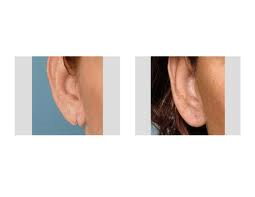
ALTERNATIVES
There are no alternatives to surgical repair of a split or gauged (expanded) earlobe.
GOALS
The goal of earlobe repair/reconstruction is to restore the size and form of the bottom portion of the ear.
LIMITATIONS
The limitations to earlobe repair is how much natural earlobe tissue remains, whether it has any scar associated with it (e.g., keloid) and what the adjoining cartilaginous ear looks like.
EXPECTED OUTCOME
Expected outcomes include the following: temporary swelling and bruising of the ear, a temporary firmness of the reconstructed earlobe, some mild discomfort of the earlobe, and temporary redness of the incision line/scar. It may take weeks to months before the final shape and optimal appearance of the earlobe is achieved.
RISKS
Complications may include bleeding, infection, dehiscence of the incisional closure (part or complete separation), a prominent or noticeable scar, earlobe asymmetry from the other side, and a notch along the outer rim of the earlobe.
ADDITIONAL SURGERY
How the earlobe heals and the occurrence of complications can influence the final shape and appearance of the earlobe after it heals. Should complications or the desire to enhance the result further by additional surgery be needed, this will generate additional costs.


